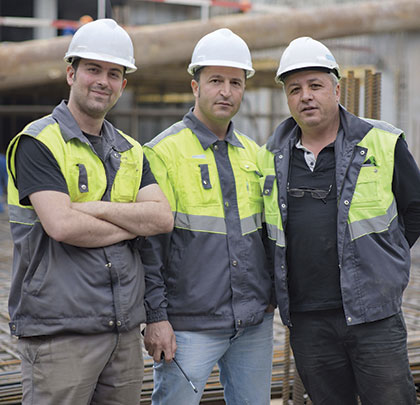Attracting good, smart employees is a challenge. In a way, the odds are against finding the best, because stereotypes persist. Ask any high school guidance counselor why they don’t recommend a career in construction to their top students and the reasons fall short of today’s technologically advanced, entrepreneurial, software-saturated contractor. The same thing is true with the average person on the street. Ask them to describe what a construction contractor is like and the response will more likely resemble the Neanderthal exhibit at the museum.
“Hiring good employees today means breaking through stereotypes or maneuvering around them to reach the good candidates you need,” states Ann Torry, vice president of marketing for BirdDogHR, a talent management service based in Des Moines, Iowa, that serves the construction market. “To do this means looking at the recruitment methods that have been used and refreshing some, reinventing others, and tossing out the ineffectual ones.”
Here are five ideas to consider:
- Create excitement in your ad: “Do you like working outside, thinking on your feet, and operating a piece of advanced technology?” sounds more exciting than “Wanted: bulldozer operator.” Shift the emphasis from a standard job description to the skills, interests, and passion needed in the business.
- Use social media: Post your employee needs on Facebook, LinkedIn, Google+, Plaxo, and Twitter. If you’re hoping to hire anyone under the age of 40, social media will get you there faster.
- Use local employment job boards and websites: Most medium to large cities will have a commercial jobs/positions open site that connects job seekers with potential employers. Don’t ignore Craigslist, which is localized to cities all over the U.S. (and much of the world for that matter). The only bugaboo with Craigslist is they currently don’t have a category (yet!) for Construction, so construction openings are found under Architect/Engineer or General Labor. Post your ad on Monster, Workhands, Big Shoes, and any other sites you can find.
- Network with career counselors, civic groups, and social service agencies: Good, smart employees can come from anywhere, but it may require some educating of your sources. To do this, create a simple Recruitment Kit with these three elements: (1) Who We Are, (2) What We Do, and (3) What Kind of Employees We Need. This should be a small PDF that can be emailed to contacts after you talk to them or meet with them. Make a point to reach out to someone new weekly who can be added to your database. Call and introduce yourself to a high school guidance counselor one week, the president of the local chamber of commerce the next week, the head of the Hispanic or African-American or Asian chamber of commerce the next week, and continue reaching out to the community opinion leaders, elected officials, and the movers and shakers in your locale. The goal is build a referral network that you can send out job notices when they arise along with a note that says: “Make sure that any candidate you send me uses your name as the referral—so I know that I’m receiving a high-quality candidate.” That kind of note puts them on notice that who they refer will reflect on them.
- Use technology to your advantage: Save time by carefully screening the pile of resumes and/or applications you receive. Every rejected candidate deserves a sincere and clear email that says they will not be hired but thanks them for their interest. Include a brief “elevator-speech-length” description of the company. You want to leave a positive impression of the company. Today’s rejected candidate could be tomorrow’s customer, influencer, or employee. Follow up the email with a mailed letter that says the same thing. A mailed letter is classy and unexpected. It reaches them through a different channel and is designed to leave them with a positive sense of the company. If this sounds like a grueling task, there is HR software available that can help automate these processes with templates and a few mouse clicks and document the communication with applicants. With select candidates, conduct a Skype or FaceTime interview for initial screening. It saves time and provides a visual impression of the candidates. These digital communication services are easy to use and can help confirm or screen out candidates before bringing them in for a face-to-face interview. The very best candidates deserve an in-person interview.
“It’s clear that in today’s market recruiting the best employees requires smart thinking and effort on the part of the hiring construction contractor,” says Torry. “Investing in value will yield valuable results.” ■
About the Author: Jeff Winke is a business and construction writer based in Milwaukee, Wisconsin. His portfolio can be seen at jeffwinke.contently.com.
_________________________________________________________________________
Modern Contractor Solutions – June 2016
Did you enjoy this article?
Subscribe to the FREE Digital Edition of Modern Contractor Solutions magazine.



